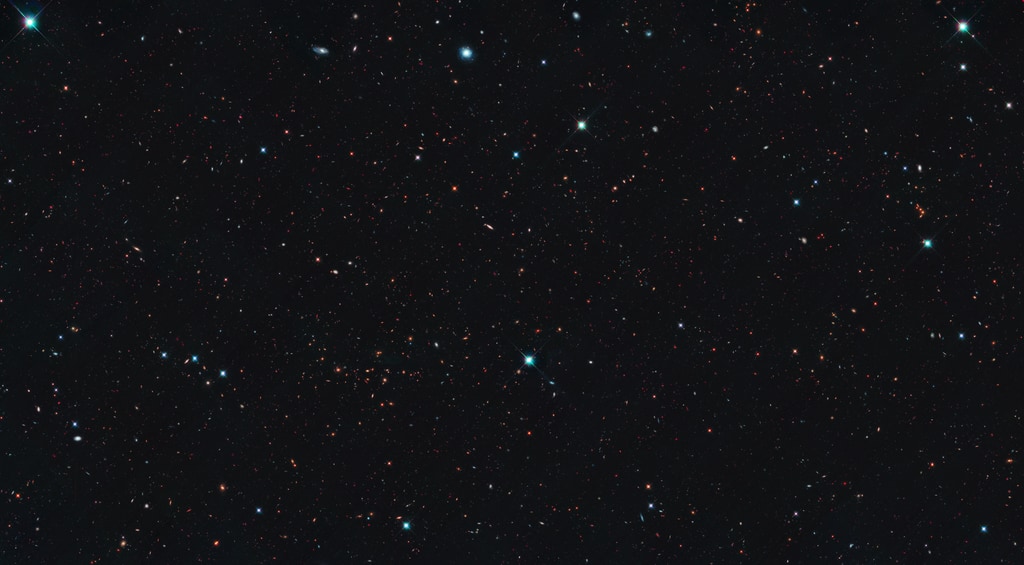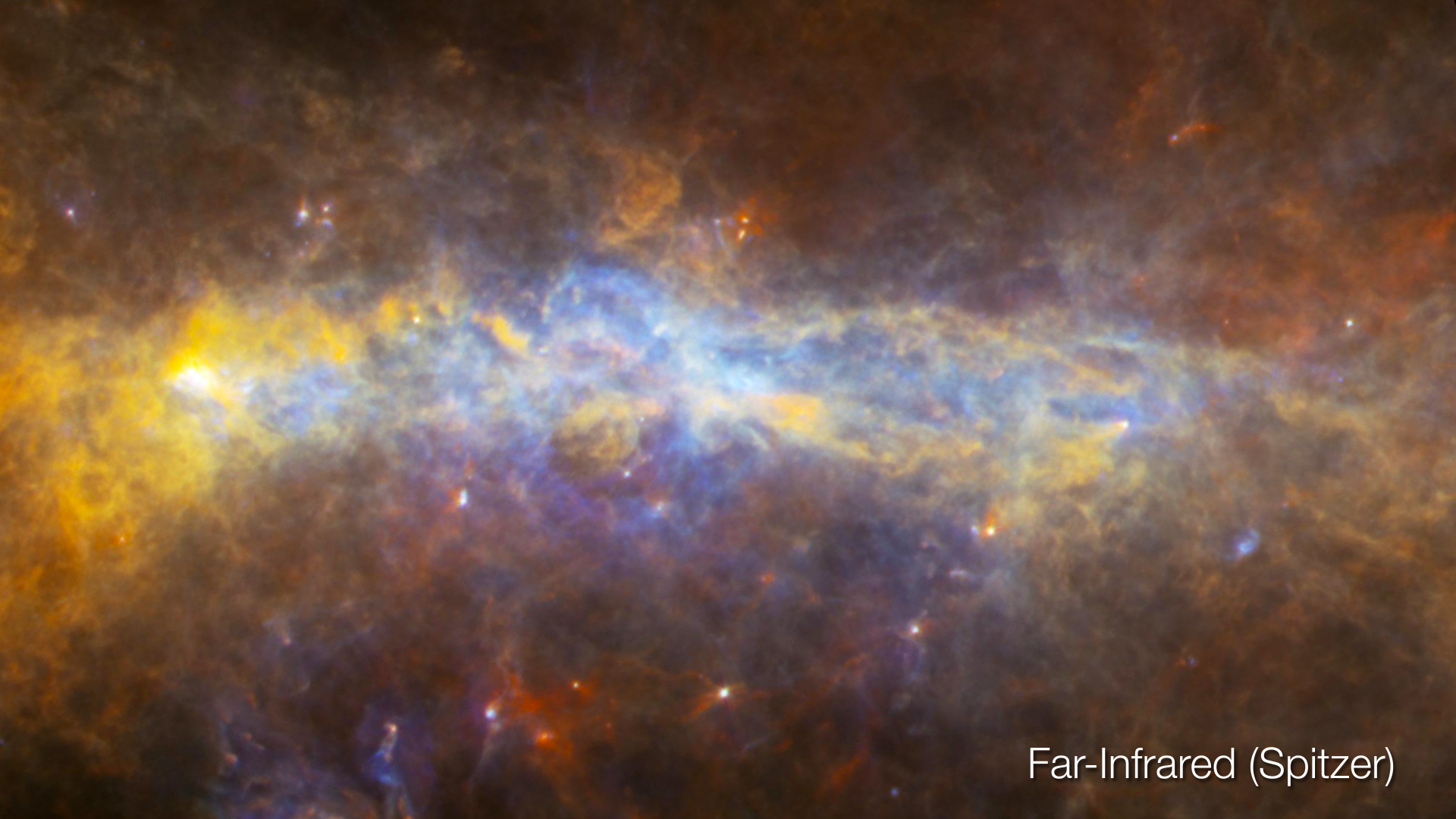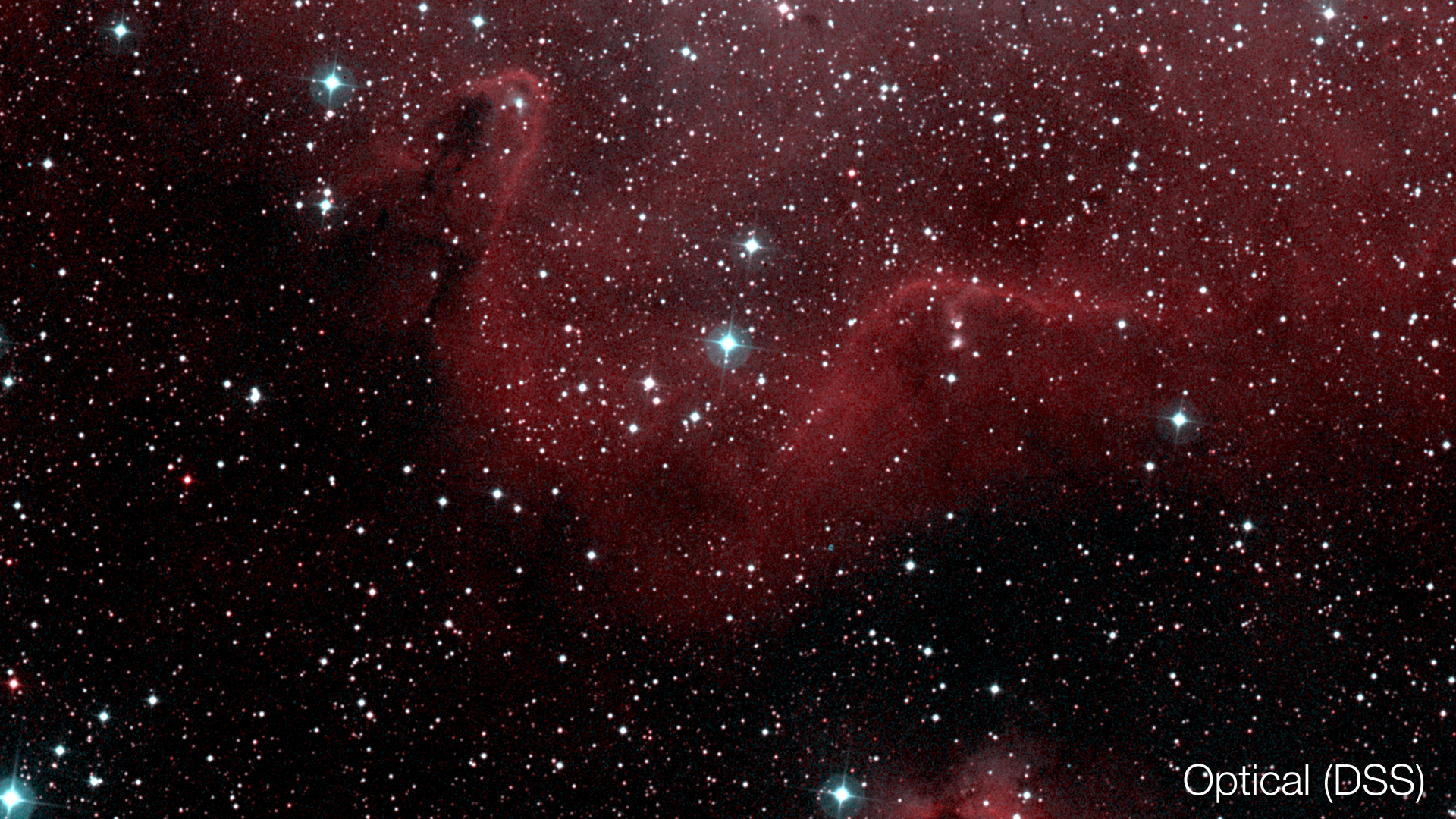Barred Galaxy (NGC 253) in Multiple Wavelengths
NGC 253, characterized by its vigorous star formation and spiral dust lanes, reveals its underlying structure in multiple wavelengths.
In NGC 253, the visible-light view is complicated by the viewing angle, dark dust clouds, and scatterings of massive stars. Switching to the near-infrared lets us see the full population of stars more clearly, revealing a bar running through the center of the galaxy. Including mid-infrared also brings out the dust lanes clearly, and even highlights the areas where stars are forming vigorously, particularly in the galaxy's center.
Optical: Dust and bright stars confuse the view in visible light.
Near-Infrared: Dust lanes along the spiral arms glow in the mid-infrared.
Mid-Infrared: The base population of stars reveal the spiral arms and central bar.
This animation is the same as above, played twice as fast.

ESO optical image of the NGC 253
Dust and bright stars confuse the view in visible light.

Spitzer Near-Infrared image of the NGC 253
The base population of stars reveal the spiral arms and central bar.

WISE image of the NGC 253
Dust lanes along the spiral arms glow in the mid-infrared.
Credits
Please give credit for this item to:
Video: NASA, ESA, and G. Bacon (STScI)
Image Credits:
- Optical: ESO
- Near-infrared: NASA, JPL-Caltech, UCLA
- Mid-infrared: NASA, JPL-Caltech, UCLA
-
Visualizer
- Greg Bacon (STScI)
-
Technical support
- Leann Johnson (Global Science and Technology, Inc.)
Release date
This page was originally published on Monday, August 6, 2018.
This page was last updated on Monday, March 10, 2025 at 12:25 AM EDT.
Missions
This page is related to the following missions:Datasets used
-
[Spitzer Space Telescope]
ID: 690This dataset can be found at: http://www.spitzer.caltech.edu/
See all pages that use this dataset -
[European Southern Observatory (ESO)]
ID: 1005This dataset can be found at: https://www.eso.org
See all pages that use this dataset -
WISE [Wide-field Infrared Survey Explorer]
ID: 1014This dataset can be found at: https://www.nasa.gov/mission_pages/WISE/mission/index.html
See all pages that use this dataset
Note: While we identify the data sets used on this page, we do not store any further details, nor the data sets themselves on our site.




























